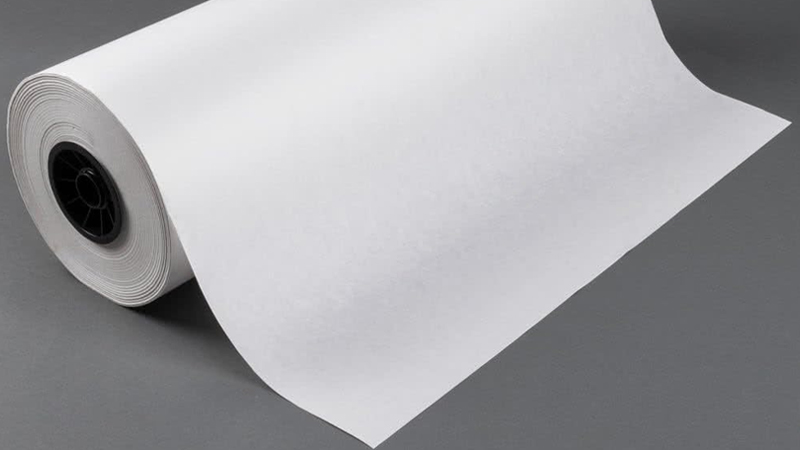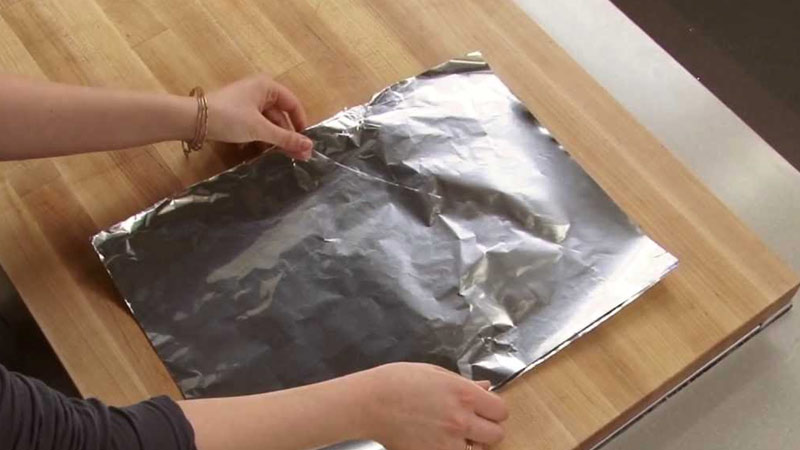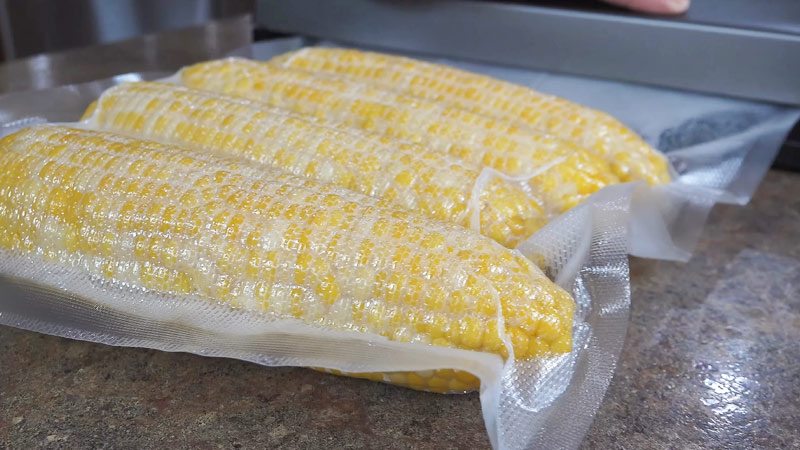When the kitchen demands flexibility and adaptability, exploring alternatives becomes essential. In the absence of freezer paper, a staple in freezing and preserving food, a range of substitutes awaits.
Whether it’s plastic wrap, aluminum foil, wax paper, or innovative silicone storage bags, each option brings its unique characteristics to the table.
These alternatives share the common goal of safeguarding food from freezer burn and maintaining optimal freshness during storage.
From traditional methods like foil to eco-friendly silicone innovations, understanding these substitutions ensures that your freezer remains a reliable ally in preserving the quality of your culinary creations, even when the usual freezer paper is not at hand.

What Is Freezer Paper?
Freezer paper is a special type of paper with a plastic coating on one side, designed for food storage in the freezer.
Its plastic side creates a protective barrier against air and moisture, helping to prevent freezer burn and maintain the quality of frozen foods.
It is commonly used for wrapping meat, fish, and other perishables before freezing and provides a secure and durable packaging solution.
Freezer paper is often employed in the kitchen for its ability to keep foods fresh and protect them during long-term storage in the freezer.
What Can I Use Instead of Freezer Paper? Freezer paper alternative
Freezer paper is commonly used in the kitchen for wrapping and storing food items in the freezer. It has a plastic-coated side that helps create a barrier against air and moisture, which helps maintain the quality of frozen foods.
However, if you find yourself without freezer paper, there are several alternatives you can use:
Plastic Wrap or Cling Film
Plastic wrap is a versatile option for short-term freezer storage. Ensure that it is labeled as freezer-safe to withstand low temperatures.
To enhance its effectiveness, double-wrap items or use an extra layer to minimize the risk of freezer burn.
Press the plastic wrap tightly against the food to create a seal that helps prevent air and moisture from reaching the food.
Aluminum Foil

Aluminum foil is a reliable substitute for wrapping food in the freezer. It forms a protective barrier against air, but wrapping the food securely to prevent freezer burn is crucial.
Use multiple layers or consider wrapping the item in plastic wrap before using aluminum foil for an added layer of protection. Avoid acidic or salty foods, as the foil may react with these ingredients over time.
Wax Paper
Wax paper is less effective than freezer paper for long-term storage but can be used for short periods. It is a good option for items with minimal moisture content.
When using wax paper, wrap the food securely, and consider placing it inside a plastic bag for extra protection. Remember that wax paper is not as moisture-resistant as plastic or aluminum options.
Plastic Bags
Zip-top plastic bags are convenient for freezing individual portions of food. Opt for bags labeled as freezer-safe to ensure durability.
Remove as much air as possible before sealing to reduce the risk of freezer burn. For added protection, consider double-bagging or using a combination of plastic wrap and plastic bags for an extra insulation layer.
Reusable Silicone Food Storage Bags
Silicone bags are an eco-friendly alternative to traditional plastic bags. Ensure the bags are labeled as freezer-safe. They are airtight and suitable for both short-term and long-term freezer storage.
Seal the bag tightly, and remove as much air as possible for optimal results. Clean and reuse these bags for a sustainable freezing option.
Vacuum-Sealed Bags

Vacuum-sealed bags are excellent for long-term freezer storage. These bags are designed to remove air, significantly reducing the risk of freezer burn. Use a vacuum sealer machine for best results.
Ensure the bags are labeled as freezer-safe, and consider portioning food items before sealing. This method is particularly effective for preserving the quality of meats and other sensitive items.
Freezer-Safe Containers
Containers designed for freezer use are available in various sizes and materials. Choose airtight containers made of durable, freezer-safe materials such as rigid plastic or glass.
These containers are ideal for storing soups, stews, and other liquid-based items. Label each container with the contents and date for easy identification and rotation. Be sure to leave some headspace to accommodate potential expansion during freezing.
Is Freezer Paper the Same as Wax Paper?

Freezer paper and wax paper are two commonly used kitchen items, often confused due to their similar appearance.
While they may share some characteristics, they serve distinct purposes, especially regarding food storage.
Understanding the differences between freezer paper and wax paper is crucial for proper use in various culinary applications.
| Characteristic | Freezer Paper | Wax Paper |
| Material Composition | Heavy-duty paper with a plastic or poly coating | Paper coated with a thin layer of wax |
| Purpose | Designed for long-term freezer storage | Primarily used for non-stick surfaces and short-term food storage |
| Moisture Resistance | High resistance to moisture, minimizing freezer burn | Limited moisture resistance, not suitable for prolonged exposure to wet or oily foods |
| Freezer Safety | Specifically designed for freezer use | Not always labeled as freezer-safe; may not withstand extremely low temperatures |
| Heat Resistance | Can withstand moderate heat for cooking purposes | May melt or catch fire at high temperatures |
| Adherence to Food | Forms a tight seal when pressed against surfaces | May adhere to some foods, but not as effectively as freezer paper |
| Durability | More durable and suitable for wrapping and sealing | Less durable, prone to tearing, not ideal for heavy-duty applications |
| Common Uses | Wrapping meats, preventing freezer burn | Lining surfaces for baking, preventing sticking |
Can You Use Wax Paper to Freeze Meat?
Yes, wax paper can be used for certain types of freezer storage, but it may not be the best choice for freezing meat.
Wax paper is coated with a thin layer of wax, which provides a non-stick surface but does not offer the same level of moisture and air protection as materials designed specifically for freezing.
Here are some considerations when it comes to using wax paper for freezing meat:
Moisture Protection
Meat is vulnerable to moisture loss, especially when frozen, leading to freezer burn. Unfortunately, wax paper is less effective than other materials in preventing this.
Its wax coating provides a minimal barrier against moisture, which means that the meat may suffer from dehydration over time, affecting its texture and taste.
For meats that are prone to drying out, such as steaks or poultry, it’s advisable to opt for materials that offer superior moisture protection.
Freezer Burn Risk
Freezer burn is a common concern when freezing meat. It occurs when the surface of the meat is exposed to air, leading to the formation of ice crystals and subsequent deterioration in quality.
Wax paper’s limited ability to create a barrier against air makes it less suitable for preventing freezer burn.
When freezing meat, it’s crucial to prioritize materials like plastic wrap, aluminum foil, or freezer-specific bags that provide a more effective shield against air and moisture.
Durability
Meat particularly cuts with sharp edges or bones, can puncture or tear through wax paper. The thin layer of wax coating on the paper does not offer the same durability as materials designed for freezer storage.
As a result, there’s a risk of the packaging becoming compromised during freezing, potentially exposing the meat to air and increasing the likelihood of freezer burn.
Choosing more robust materials like plastic wrap or freezer bags ensures better protection for your frozen meats.
FAQs
What is freezer paper, and how is it used in sewing?
Freezer paper is a versatile tool in sewing. Its glossy side adheres temporarily to the fabric when ironed, providing a stabilizing surface for precise cutting and creating templates.
Can I use freezer paper for appliqué projects?
Yes, freezer paper is ideal for appliqué. It allows you to create detailed templates and easily position them on fabric for accurate stitching.
Is freezer paper reusable in sewing projects?
It can be reused for multiple cutting sessions if the paper remains intact and the adhesive side still adheres to the fabric.
To Recap
In the culinary and household realm, the absence of freezer paper need not hinder the preservation of freshness and flavor.
From the simplicity of plastic wrap to the protective embrace of vacuum-sealed bags, the alternatives to freezer paper offer a diverse array of options.
Whether opting for the convenience of aluminum foil, the eco-friendly nature of silicone storage bags, or the traditional reliability of plastic bags, each substitute contributes its unique strengths to the art of freezer storage.
In embracing these alternatives, one can navigate kitchen challenges with ingenuity, ensuring that the quest for sustained freshness and protection against freezer burn remains steadfast, even when the familiar freezer paper is not within reach.
Leave a Reply